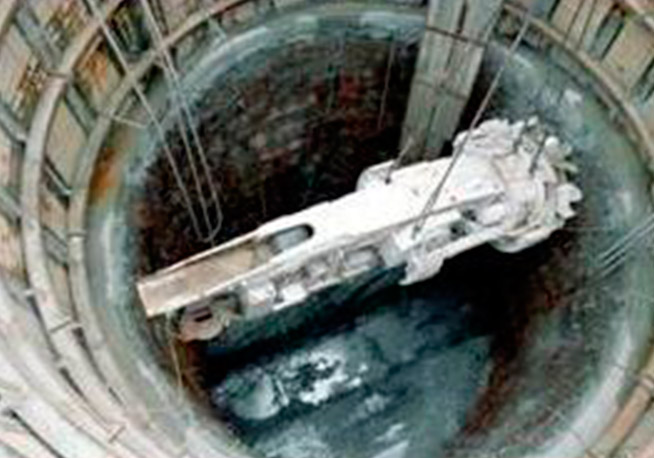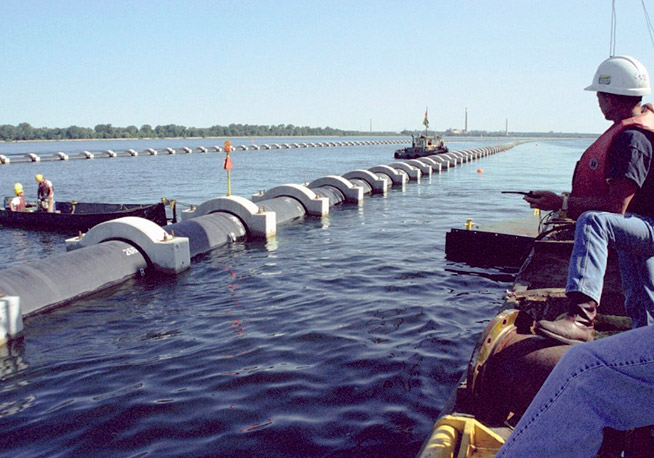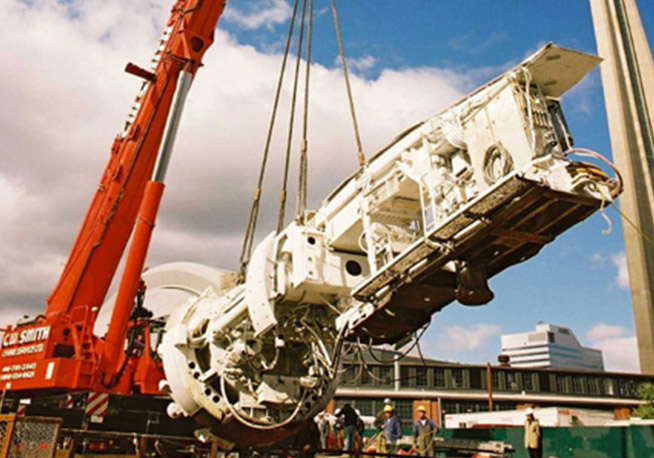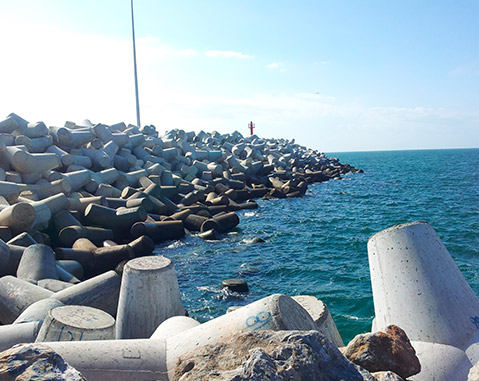- ACCIONA
- Projects
- Construction
- Port and Hydraulic Works
- Deep Lake Water Cooling System
Deep Lake Water Cooling System
- Assembly of 15,000 meters of high-density polyethylene (HDPE) pipe with a diameter of 1.6 meters, welded by fusion and deployed to the bottom of the lake, up to 83 meters deep.
- Heat exchange plant, including 36 large heat exchangers.
- Connective valve chambers to the cooling station.
Water drawn from Lake Ontario for the city’s potable water supply is now pumped from a deeper source, allowing its cooler and more stable temperature to be utilized for air conditioning before being added to the municipal water supply. The City of Toronto DLWC system employs three intake pipe lines, each five kilometers in length, laid on the bed of Lake Ontario. This $100 million system took over two and half years to complete, but now supplies an extensive list of downtown Toronto businesses and buildings with an alternative to conventional air cooling—one that is sustainable, cost-effective and efficient.
About the technology
The City of Toronto DLWC system utilizes the highly dense cold water found at the bottom of Lake Ontario as the heart of its cooling solution. With every winter, the water in Lake Ontario cools to just under 4° C. This surface water, colder and denser than the warmer water of the rest of the lake, sinks to the bottom of the lake where it remains. Even as the surface water warms over the summer, the dense water at the depths of the lake remains near freezing. Years of winters have built a reservoir of chilled water that is continually re-stocked, making the water a completely renewable energy source.
The three intake pipes, each more than five kilometers in length, bring this cold water from the bottom of the lake to a filtration plant. The water then proceeds to an energy-transfer station within the city, where heat exchangers capture the energy from the cold lake water and transfer it into a closed circuit, which is then transferred through the cooling towers and on to the buildings in downtown Toronto. The water used in this process then moves on its way into the city’s potable water system.
Why this project is important
ACCIONA’s participation on the DLWC system in the City of Toronto is a prime example of the proud partnerships we seek and another way to demonstrate our commitment to sustainable development. This DLWC system is a revolutionary cooling solution and by far the largest DLWC system in the world. At its capacity, the DLWC will provide enough cooling for 100 commercial towers in downtown Toronto, saving the city money and providing an effective, efficient and sustainable solution to air cooling. It is estimated that the DLWC system can reduce energy consumption by up to 90 percent in contrast to conventional air conditioning.
How the project is sustainable
The permanent reservoirs of dense, cold water at the bottom of Lake Ontario are replenished each winter, ensuring this solution will always be viable. Additionally, since the City of Toronto DLWC solution uses water that had already been earmarked for potable water consumption, and therefore does not push the heated, processed water back into the lake, it is an entirely sustainable solution for air conditioning. Because the water is from the depths of the lake (83 meters deep), it is free of odors and impurities, reducing the need to chemically treat the water for drinking. The DLWC system also avoids nearly 45,000 kilograms of chlorofluorocarbon (CFC), a common refrigerant used in standard air-conditioning systems, which has been found to deplete the ozone layer.
During construction, special attention was prearranged in order to minimize impact on the lake’s ecosystem. The project was brought to a standstill during fish spawning season and aquatic life was monitored closely with the use of underwater cameras to ensure the project was not disturbing this sensitive environment.
What people are saying
“For Toronto, it’s a win-win-win situation: cooler and cleaner drinking water, more clean, cool air for big buildings, and less smog.”
- Natural Resources Canada
General information
- Location
- Ontario, Canada
- Client
- The City of Toronto and Enwave Energy Corp.
- Our role
- General Contractor, responsible for procurement; construction of intake pipelines, heat exchange plant, heat exchangers and valve chambers; equipment installation, testing and commissioning of the project
- Infrastructure
- Enwave’s Deep Lake Water Cooling system
- Completion date
- 2004
Image Gallery
discover other flagship projects
Port of Salina Cruz
Salina Cruz, Oaxaca (Mexico)
Expansion of the navigation channel from a bottom depth of 80 m to 120 m, allowing access to larger vessels and the possibility of incorporating new commercial routes.
Sagunto South Wharf
Sagunto, Valencia (Spain)
ACCIONA Infraestructuras has been a pioneer in its approach to quality and sustainability, which represent an incentive for the motivation and satisfaction of its employees, as well as contributing to strengthening team spirit.






View ACCIONA Social Networks